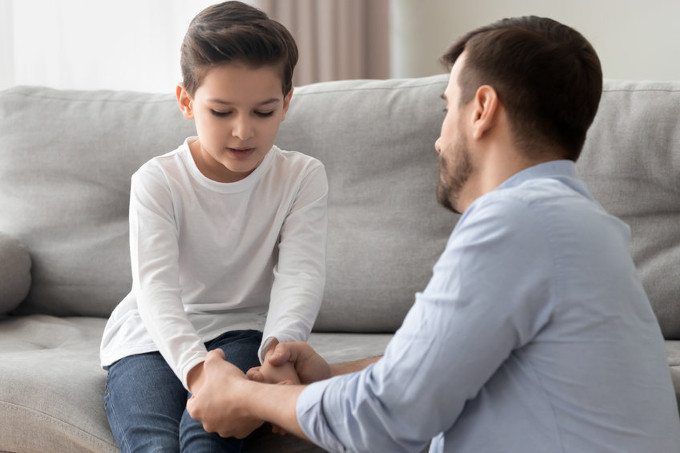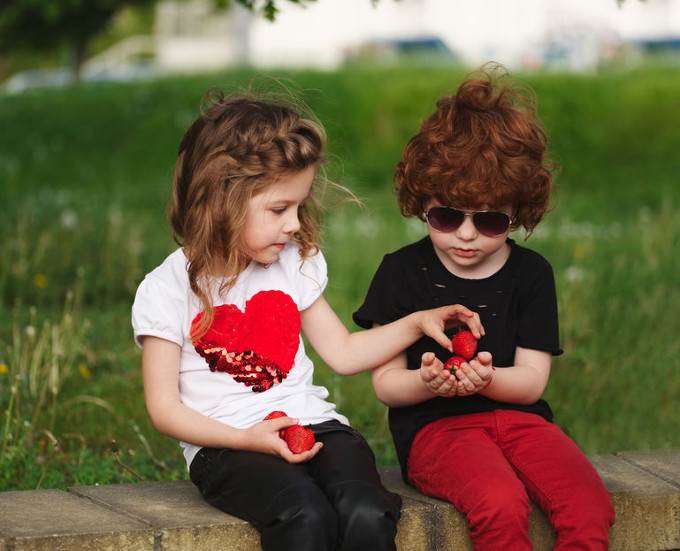Why We Should Teach Empathy From a Young Age

By Nicole Garrison
Ability to feel empathy is more important now than ever. Empathy helps us better understand the emotions of other people. Our world became cruel and insensitive to the pain people experience during their lives. These values are underestimated and modern children grow more ego-centric. For this reason, it’s important to develop empathy in children. In this article, we will discuss the patterns of developing empathy from a young age.
Why Feeling Empathy Is Important for Children?
Developing empathy from a young age is an important part of children’s upbringing. Your children will benefit from it in their adult lives. By teaching our children to feel empathy, we can make this world slightly better. However, there are no courses teaching how to express empathy. Children can learn this skill only from their parents. Therefore, it would be nice if children learn from their parents how to express empathy. Parents can demonstrate empathy to teach their children by their own example.
Why Building a Sense of Empathy Is Beneficial?
Helping children to develop a sense of empathy in them is beneficial because:
- they will feel more secure in life;
- they will be able to build strong relationships with other people (friends, educators, family members, etc.);
- promotes adequacy and normal mental health;
- help develop social harmony;
- reduced the likelihood of bullying among teammates;
- empathy is a good way to connect with the cultures of other people.
These patterns will help build empathy. Maybe your child will not write best essays but will be kind and compassionate. We are all living in collective societies and need to help each other during hardships. Cruel people that aren’t able to feel empathy become alienated, they lack friends, and society doesn’t appreciate their values. Being compassionate is a must in human society to be a part of it and socialize normally.
Empathetic Adults Are More Successful
Children grow into adults with time. Helping your children become empathetic adults will help them:
- reach greater success in personal and professional life;
- become a happier person;
- develop better ability to understand other people (friends, customers, colleagues, suppliers);
- reach success in getting leadership positions at work;
- develop more adequate relationships at home and workplace;
- better solve conflicts;
- experience lower levels of stress in different life situations.
These benefits are only the tip of the iceberg shown in webinars. Developing empathy is a part of a child’s ability to control her emotions and adapt to the changing world.
How to Help Children Develop Empathy?
Parents are the main teachers for children since the beginning of their lives. By modeling empathetic behavior, parents can teach their children to express empathy, but there are other ways to develop empathy in children. These patterns involve the following:
- help children name their feelings because understanding their feelings is the first step to understand the feelings of other people;
- talking to children about the feelings of other people and the reasons why they feel in this way; helps develop emotional language and understanding the perspectives of other people;
- taking care of plants and animals; this helps children understand their role in helping those who are more vulnerable and unprotected;
- reading books and TrustMyPaper essays with children as they learn to associate their actions with favorite characters;
- make sure that the emotional needs of your children are met; to be able to feel empathy, a child should feel emotional support from parents before she can express this feeling to someone else;
- discuss the examples of positive and negative behavior around them; in our lives, we’re exposed to examples of good and bad behavior including those showcased in movies and TV shows. By discussing good and bad behaviors parents can develop correct attitudes in children.
However, the ability to develop empathy depends on multiple factors.
Factors Helping Develop Empathy
There are several factors that can help develop empathy in children. Some children can develop empathy rapidly, for others the process will take greater time. The following factors make an impact on the ability to develop empathy:
- genetics – family factors and environment in which a child is growing are important when aiming to develop empathy;
- neural development – children having psychological disorders may experience problems in developing empathy;
- temperament – the ability to develop empathy depends on personal temperament (phlegmatic person are less inclined to express empathy as compared to sanguine-tempered persons);
- ability to socialize – each person has a different ability to socialize conditioned by a number of factors; highly-social individuals tend to express greater empathy towards others as compared to people who prefer alienate themselves from others;
- parenting – people having children teach how to express empathy when they become parents;
- relationships between parents and children – as we have already mentioned above, parents can develop empathy in their children by showing their own examples.
The best age to develop empathy is between 6 and 13 years, but the initial foundation for the ability to feel empathy is laid much earlier. It arises from the mother-infant relationships at the age of 3-9 months.
The ability to feel and express empathy is important for children. Parents can help build this ability in different ways. This helps children better socialize and become better people. The ability to build empathy depends on multiple factors, but all parents can help their children develop empathy. Sometimes empathy is built naturally, but in other cases, it may take more time. Building empathy in our children allows us to live in a better world.
 Dreaming allows your heart to open and as your heart opens all possibilities are possible. Dreaming allows the illusion to dissipate and for potential to glimmer like an all knowing winking eye. As you gaze at the clouds or a piece of grass or clover, dreaming shows you a part of yourself that yearns to be free. In the still, the quiet dreaming occurs. On the plane, train or automobile, dreaming sets the imagination ablaze.
Dreaming allows your heart to open and as your heart opens all possibilities are possible. Dreaming allows the illusion to dissipate and for potential to glimmer like an all knowing winking eye. As you gaze at the clouds or a piece of grass or clover, dreaming shows you a part of yourself that yearns to be free. In the still, the quiet dreaming occurs. On the plane, train or automobile, dreaming sets the imagination ablaze. Julia Parsell is a Certified Holistic Health Counselor with an emphasis on the intersection of science and the sacred. She writes from experiences and transformative understandings that have led her to an authentic and peaceful life. She goes by these names: mother, grandmother, sister, aunt, niece, cousin, and friend. As home educator of her three children, she also developed/ran cafes, and maintained various leadership roles within her community. Her greatest desire is to encourage others to live life fully. Her passions are family, art creation, writing, and trail blazing. She loves her life in Western North Carolina.
Julia Parsell is a Certified Holistic Health Counselor with an emphasis on the intersection of science and the sacred. She writes from experiences and transformative understandings that have led her to an authentic and peaceful life. She goes by these names: mother, grandmother, sister, aunt, niece, cousin, and friend. As home educator of her three children, she also developed/ran cafes, and maintained various leadership roles within her community. Her greatest desire is to encourage others to live life fully. Her passions are family, art creation, writing, and trail blazing. She loves her life in Western North Carolina. 


 I felt compelled to write about ‘being the change’ this week after all of the negative news going on in the world lately. I won’t get into it, as I’m sure most of you are aware of what’s been going on but I just wanted to take the time to remind everyone that it all starts with each and every one of us. We all matter and we all mean something. Somewhere along the line, it became acceptable; almost required to teach us that we are insignificant and we began to lost our luster, our soul shine…and that is the greatest lie ever taught. We are all significant, we are divine, we are love. Don’t ever forget that because once you remember, the world will reflect a place that won’t need changing.
I felt compelled to write about ‘being the change’ this week after all of the negative news going on in the world lately. I won’t get into it, as I’m sure most of you are aware of what’s been going on but I just wanted to take the time to remind everyone that it all starts with each and every one of us. We all matter and we all mean something. Somewhere along the line, it became acceptable; almost required to teach us that we are insignificant and we began to lost our luster, our soul shine…and that is the greatest lie ever taught. We are all significant, we are divine, we are love. Don’t ever forget that because once you remember, the world will reflect a place that won’t need changing. 










